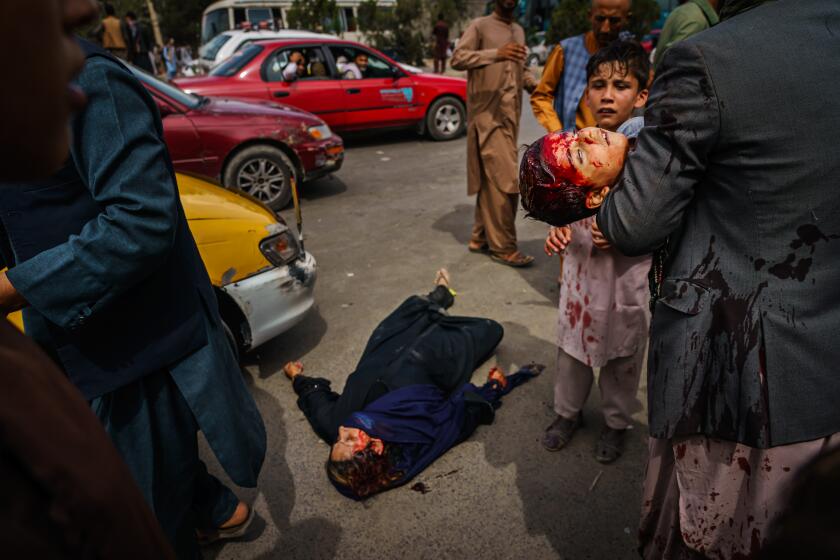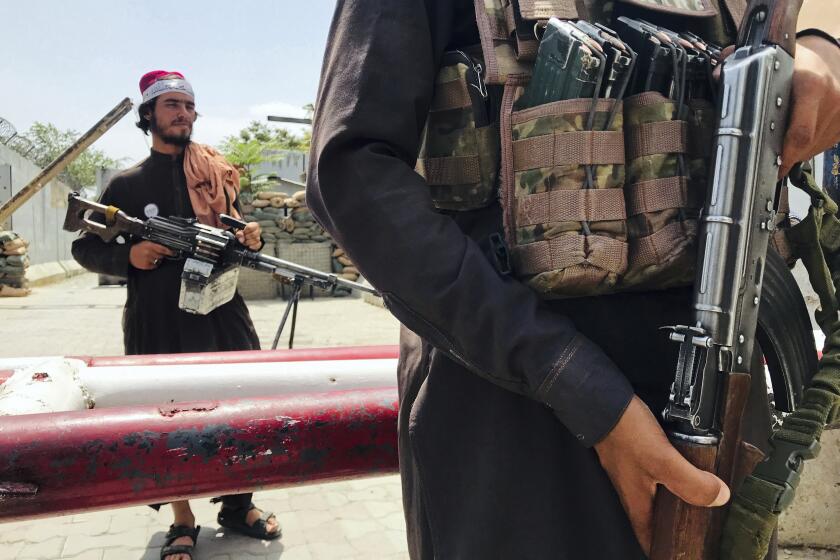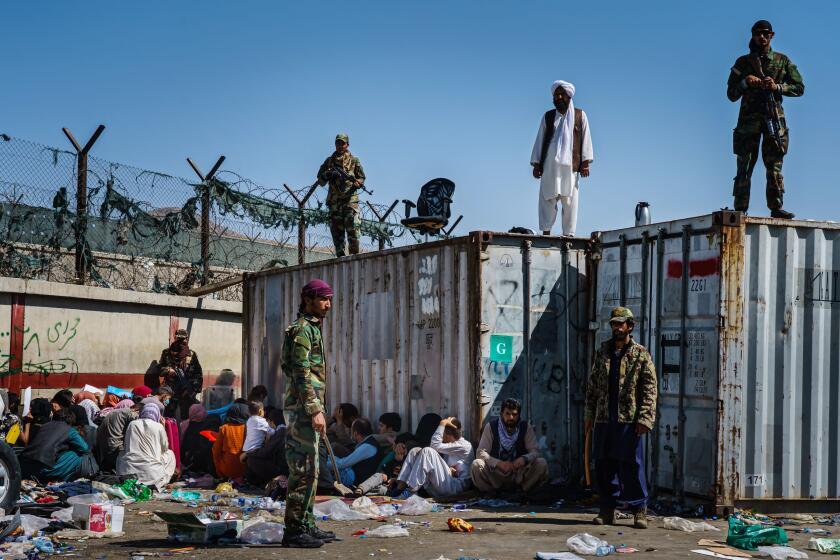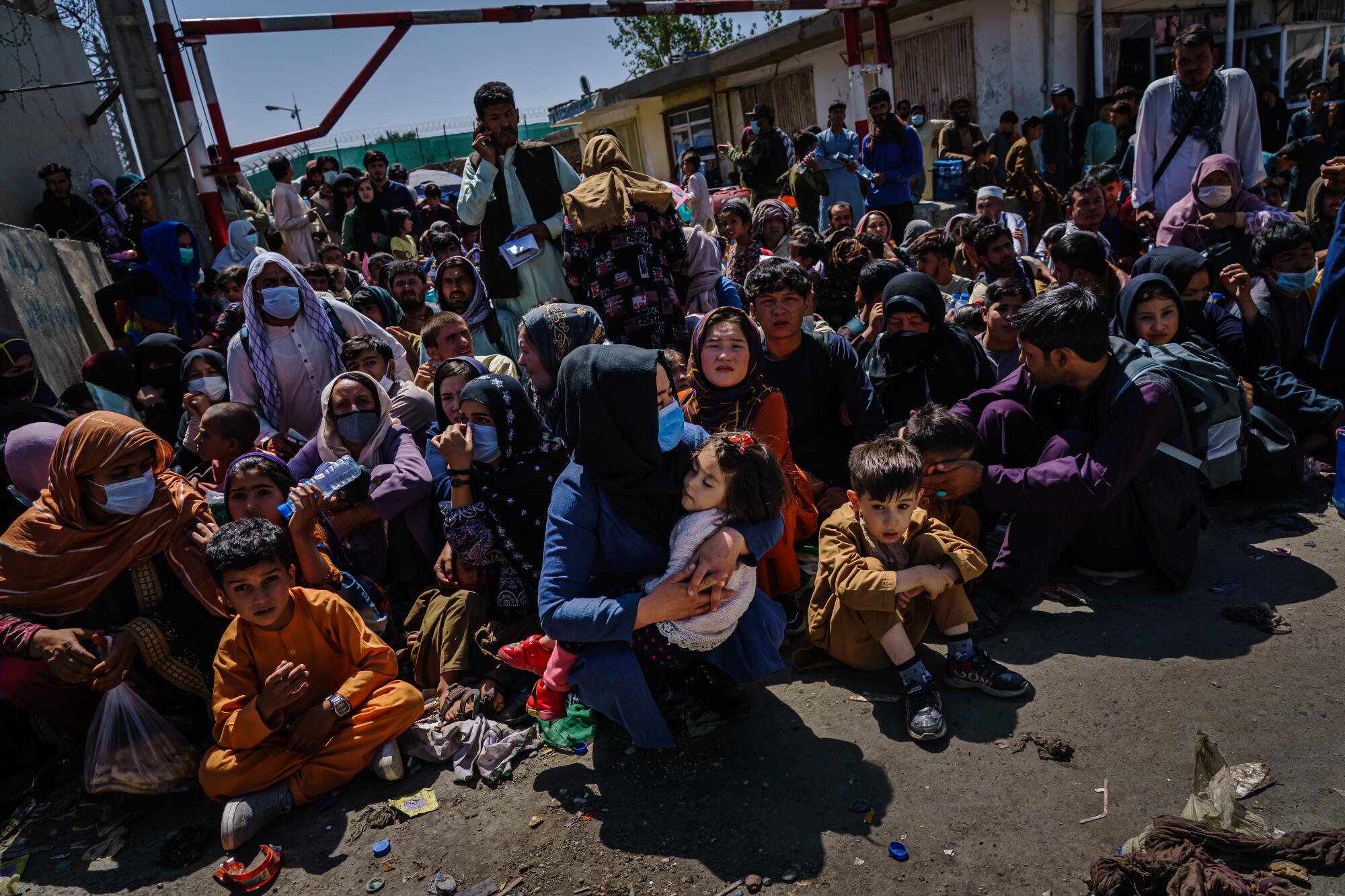
- Share via
KABUL, Afghanistan — Her voice is steady and calm, but at times, talking of days just passed, she has the look of a person in the grip of vertigo. Or simple disbelief.
“This is a very horrible moment,” she said. “All of a sudden you feel trapped. And there’s no way out.”
Before Kabul fell to the Taliban on Aug. 15, this 30-year-old Afghan woman was something of a pioneer. She managed a company in an industry that developed swiftly over the last 20 years, one in which women played a small but significant role.
That characterization of her professional life is deliberately vague, as is disclosure of her first name only — Sahar — or any description of her appearance beyond her reflective eyes, her black hair, her way of clasping her hands together as she speaks. Even basic details of her personal life are being withheld.
Because she is afraid.
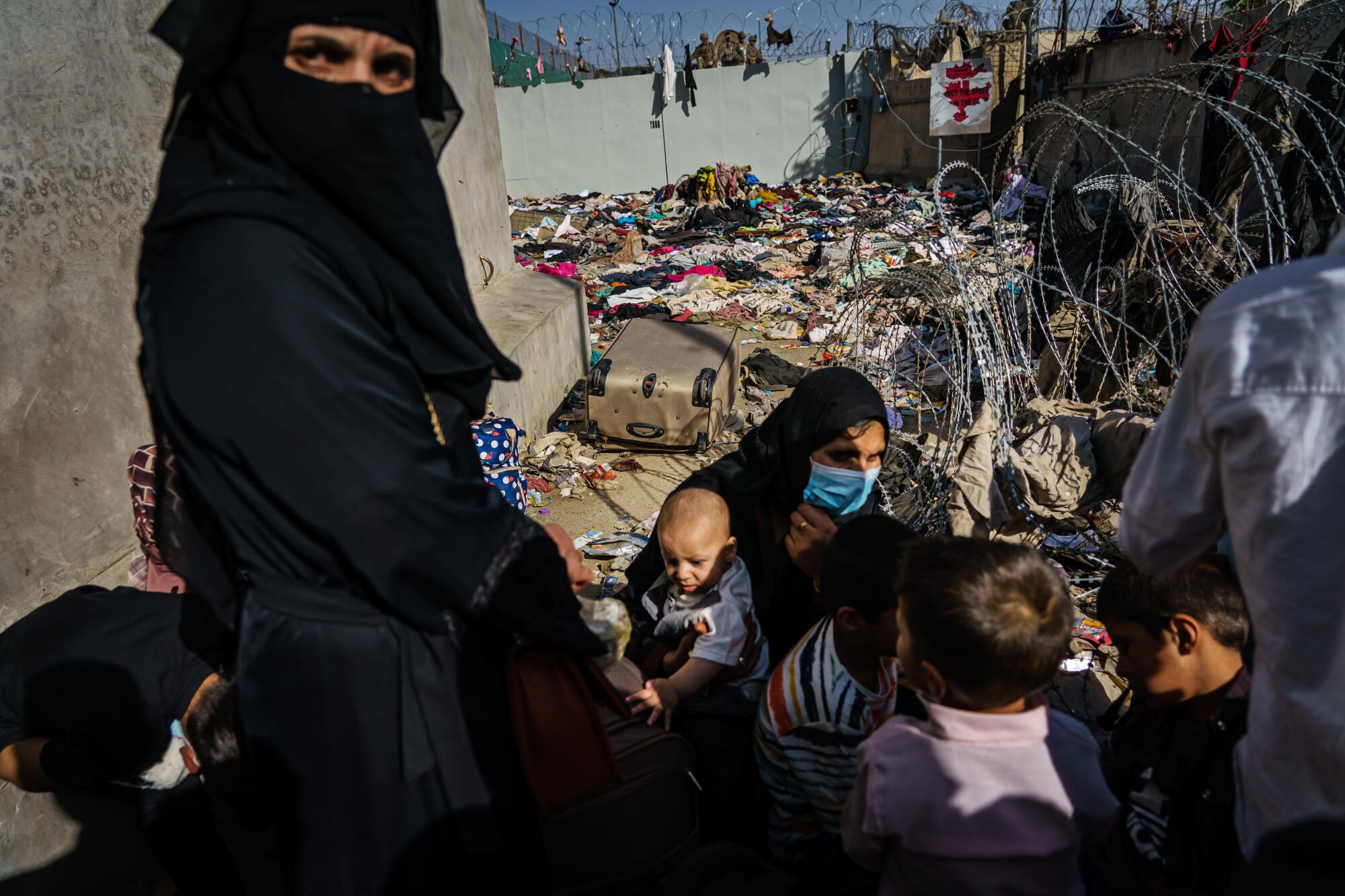
Taliban fighters have yet to come knocking on her door. But ever since the city and country changed hands, Sahar has largely stayed out of sight, wondering whether the accomplishments in which she previously took such pride will now be her undoing.
“I don’t have a voice right now,” she said. “You have to stay low-profile. You have to protect yourself. You have to protect your identity.”
Two Afghanistan suicide bombings — one at the airport and one nearby — are by an Islamic State affiliate, Pentagon says.
It’s hard to put a number on how many Afghan women are at risk under the new leadership. But longtime observers of Taliban behavior toward women say there are two wide categories of women who could face deep trouble.
“One would be activists, people who have really worked visibly for women’s rights, openly fighting against Taliban-like attitudes, or in some cases the Taliban itself,” said Heather Barr, the associate director of the women’s rights division for the New York-based group Human Rights Watch.
“Then there are also women who don’t necessarily see themselves as activists but who have roles that are high-profile or nonconventional or highly skilled — they stuck their heads above the parapet somehow,” she said.
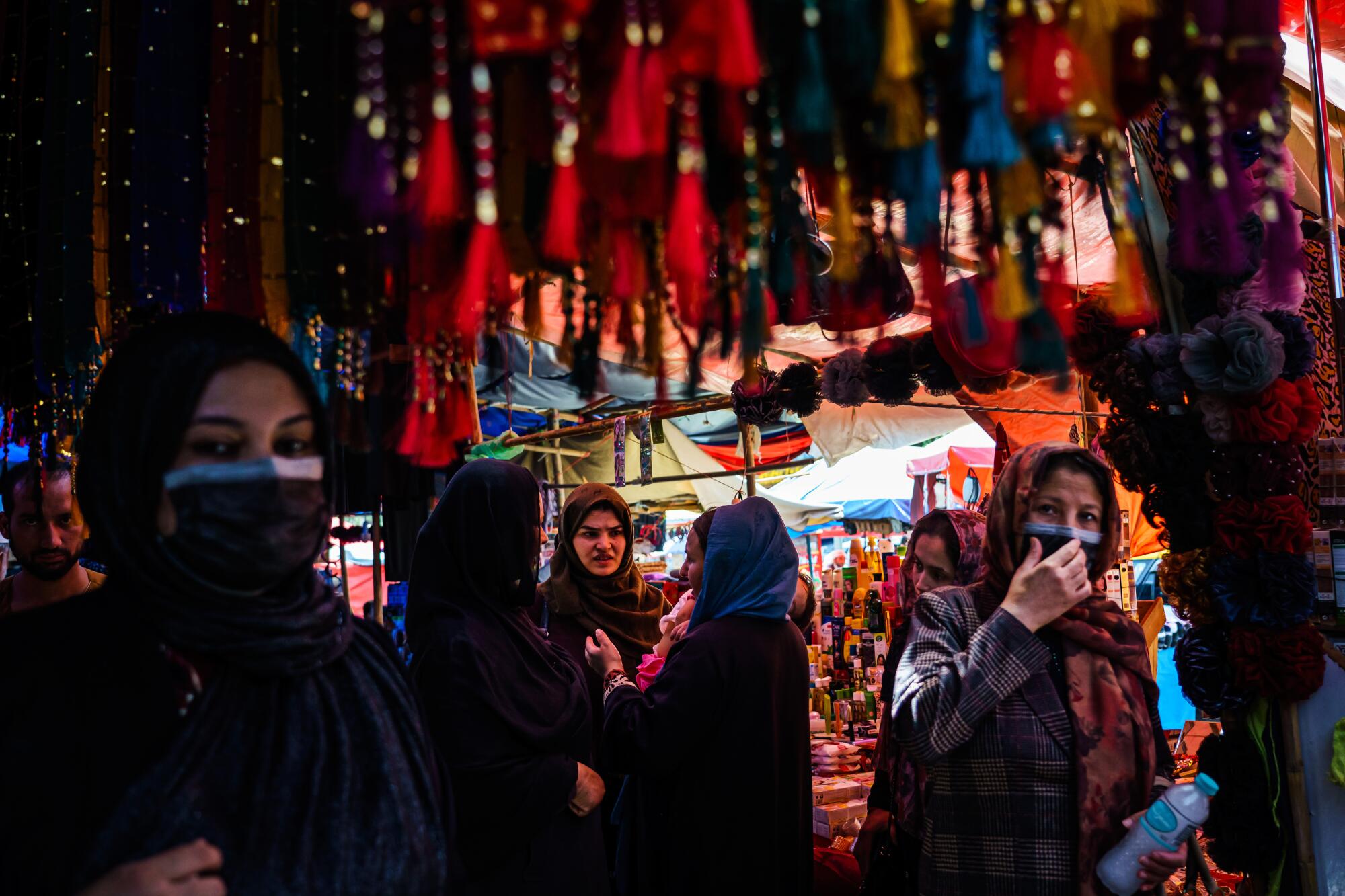
That might include women who are doctors, judges, public officeholders, members of the police or army, journalists, scholars, athletes, businesswomen — “any unconventional occupation or pursuit that puts you in the public eye, where the Taliban does not think women should be,” Barr said.
Women, in other words, like Sahar.
Some of the exceptional ones are surfacing elsewhere, safe. A group of soccer players found haven this week in Australia, an exodus that totaled nearly 80 including their relatives and officials from their sports federation. Five members of a famed all-female robotics team, which included girls as young as 14, made it to Mexico.
Afghan women faced an uncertain future this week as U.S. forces withdrew and the Taliban consolidated control.
Since taking over Afghanistan in an offensive whose final push lasted only days, the Taliban has offered a reassuring narrative about women’s status — yet one swiftly undercut by caveats.
In the Islamist group’s first days in power, the Taliban declared that women would be able to work and be active in society, within an Islamic framework. That left many convinced that the movement remains committed to its core philosophy of earlier years, when it confined women to home, denied them work and education and beat them for infractions such as wearing nail polish.
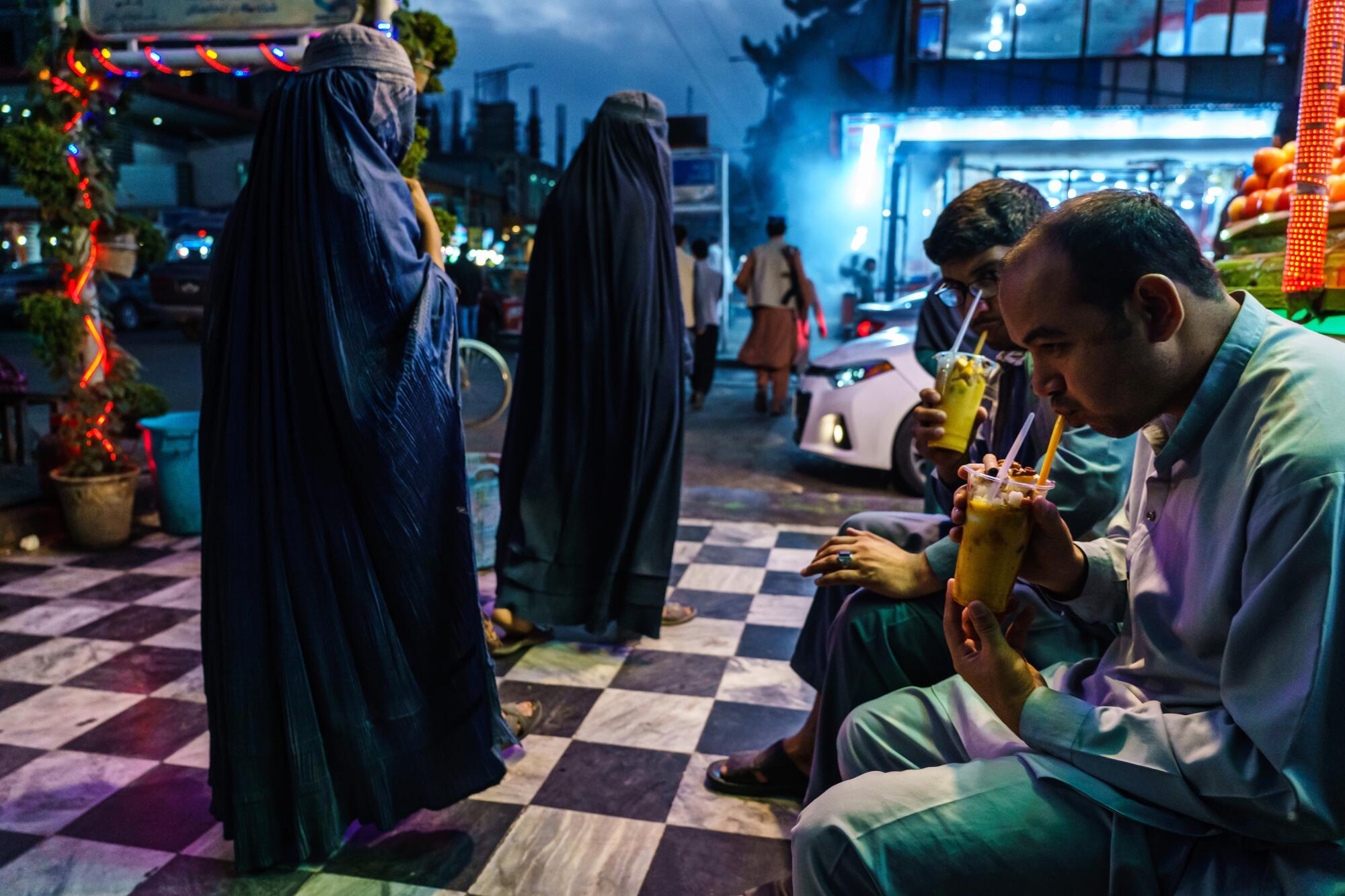
On Tuesday came a further retreat: A Taliban spokesman said women should remain indoors for their own safety, explaining that was only a precaution until the group’s fighters were better trained in interacting with them.
Afghan women of Sahar’s generation have limited firsthand recollection of the Taliban’s five-year rule, which ended when the group was toppled in the 2001 U.S.-led invasion. But their mothers, their aunts, their elder sisters remember — and have recounted how Taliban pledges of greater freedoms, conditioned on an improving security situation, never materialized.
“The Taliban have promised, but they have done the opposite,” Sahar said.
Although a Taliban spokesman said the group would not seek retribution against those who opposed it, some Afghans who consider themselves targets are living in safe houses, together or alone, hoping against hope that Western friends can pull strings and help them secure passage out of the country.
That cohort includes men and women alike — people who worked for civil society organizations, for example, or in international development. And they fear not only for themselves but also for their families.
The Biden administration has expressed determination to help those who most overtly aided the American-led war effort: Afghan interpreters who served alongside U.S. forces. Those ranks are overwhelmingly male, and several thousand of the estimated 22,000 Afghans who are eligible for so-called special immigrant visas have been spirited away with their families, mainly settled at U.S. military bases.
L.A. Times photographer Marcus Yam was assaulted and detained by Taliban members. Then they gave him a Monster Energy drink.
For Afghans who wouldn’t qualify for those visas, a broader program known as humanitarian parole could provide a path. People whose situation was deemed urgent would have one year in the U.S. to apply for programs such as refugee status or asylum.
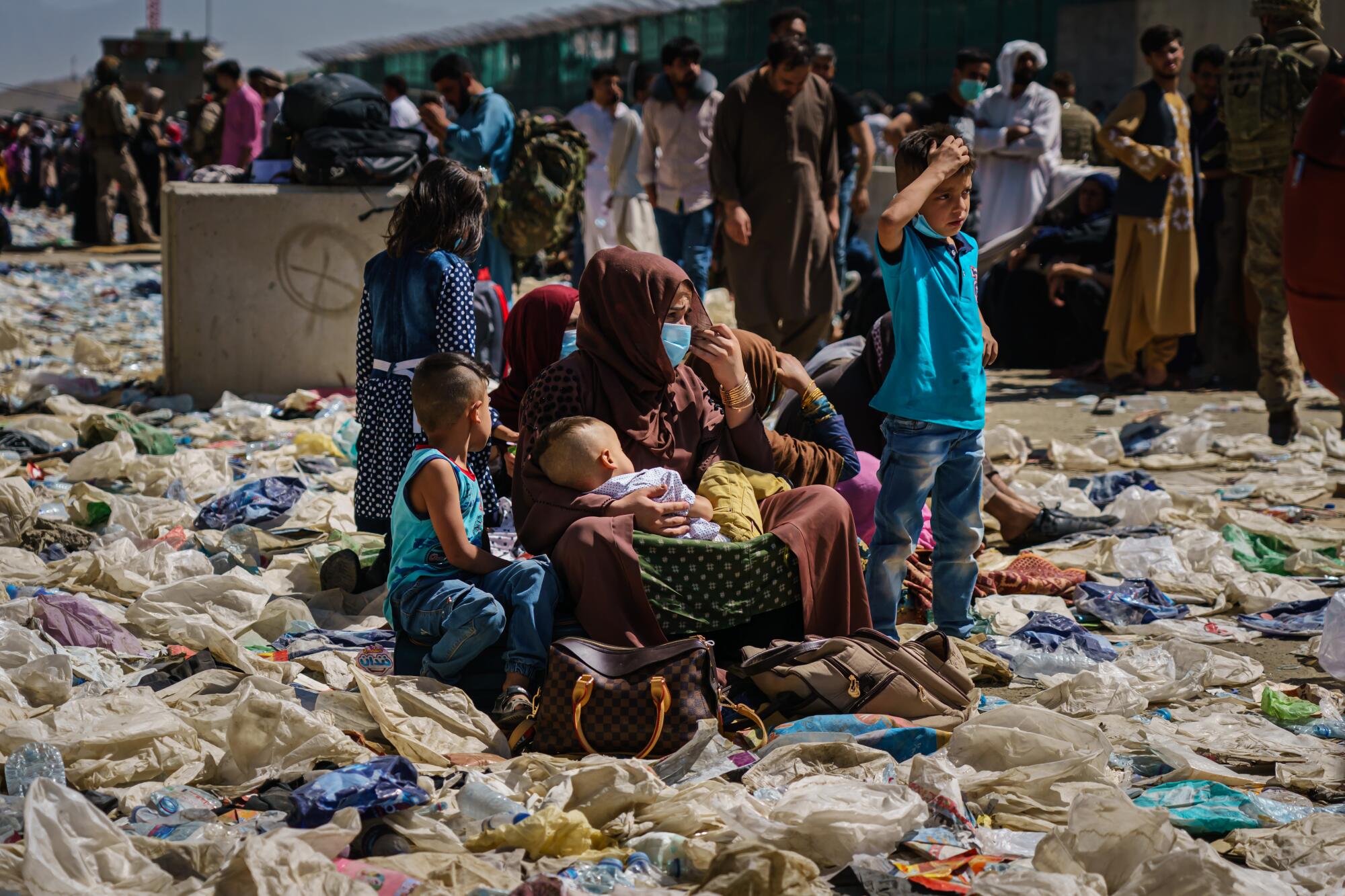
First, though, one must get out. The U.S.-led airlift’s tempo has accelerated sharply in the last few days, with more than 82,000 Afghans flown out since Aug. 14, the day before Kabul fell to the Taliban.
But the American military presence, at least for now, is scheduled to end in just six days, and U.S. officials have said that in the evacuation effort’s final days, the priority will be flying out American citizens and U.S. forces, whose numbers are already being drawn down.
U.S. citizens who want to leave Afghanistan will be able to do so, even after the Aug. 31 deadline for troop withdrawal, Blinken says
Mindful of the crucial security umbrella provided by American forces and firepower, allies in the North Atlantic Treaty Organization are winding down their own missions as well. Women like Sahar know their chance of escape via the airlift, already an almost impossibly long shot, is dwindling daily.
After the Americans leave and the Taliban movement consolidates its rule, there might be some possible avenues of escape — reopened land borders to neighboring countries, perhaps.
Or commercial air travel, if the airport again became both approachable and operational under full Taliban control. But that would carry the risk that by presenting documents to depart, bearers would deliver themselves into the hands of those who might wish them harm. Taliban officials have already told Afghans they should not try to leave.
Though safe for the moment, Sahar speaks like a woman bereaved, grieving for a homeland that no longer feels like her own.
“Everyone’s mourning. We are so broken,” she said. “I really wish this was just a nightmare. But when you wake up each morning, you see this is reality.”
Times staff writer Laura King in Washington contributed to this report.
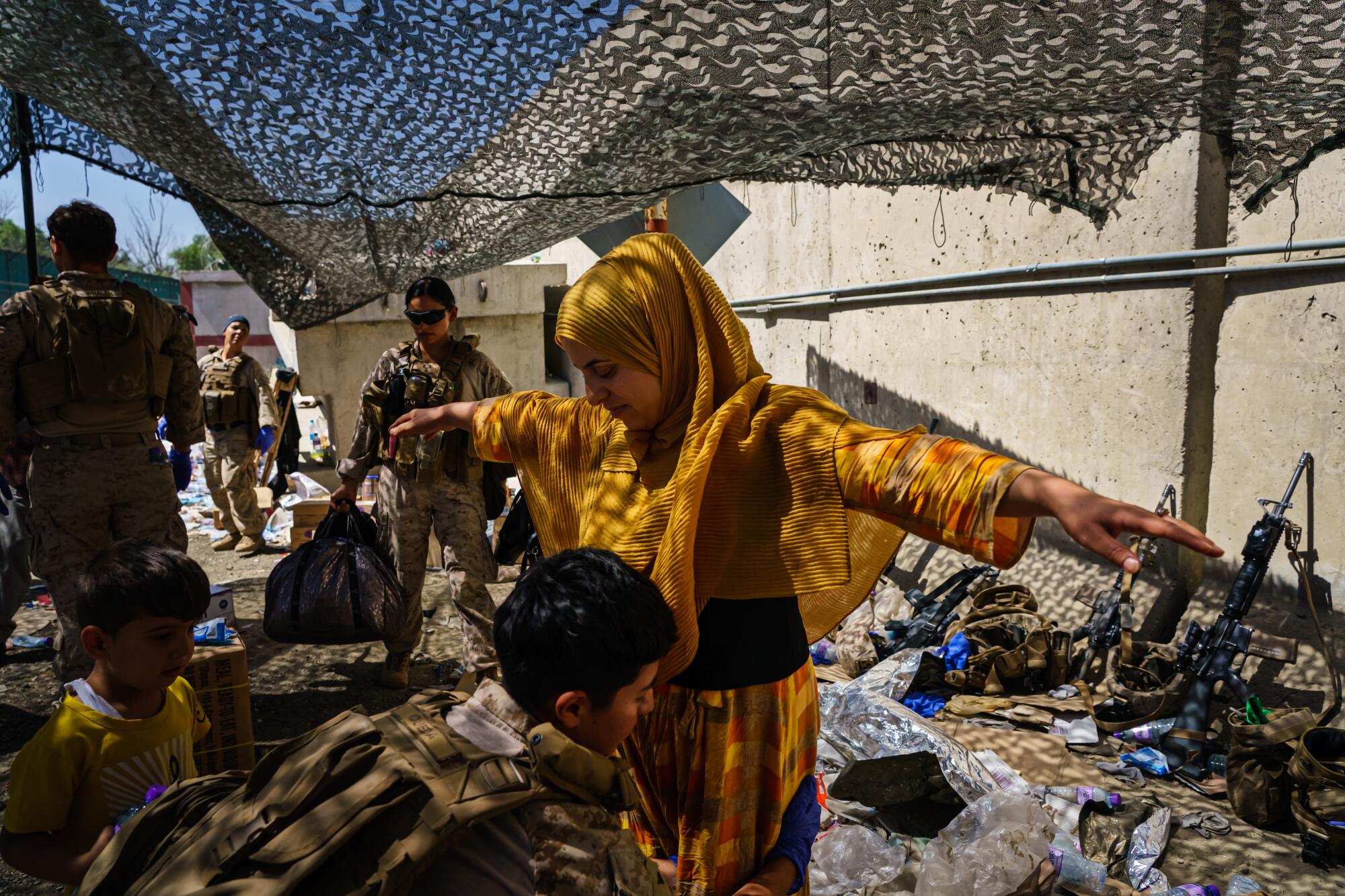
More to Read
Sign up for Essential California
The most important California stories and recommendations in your inbox every morning.
You may occasionally receive promotional content from the Los Angeles Times.

